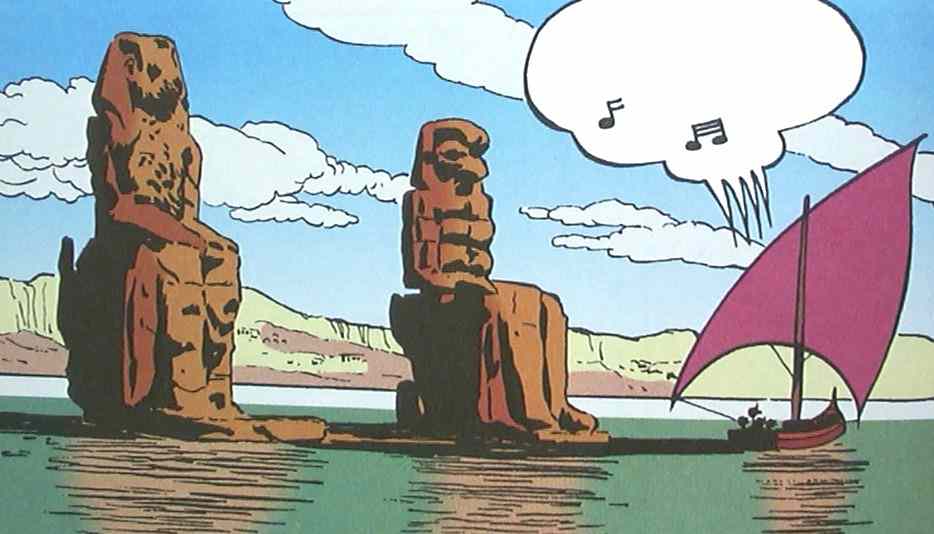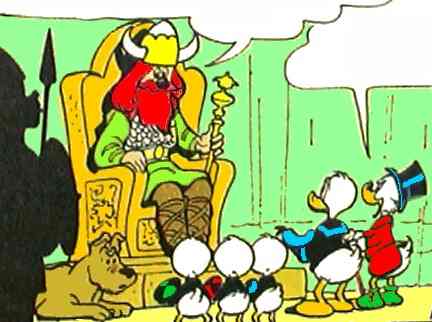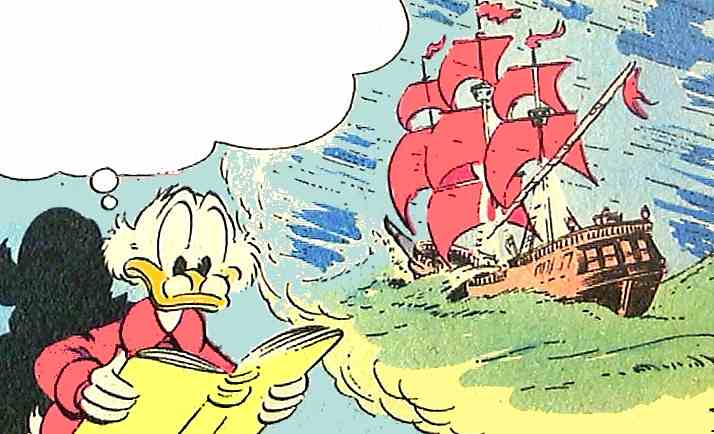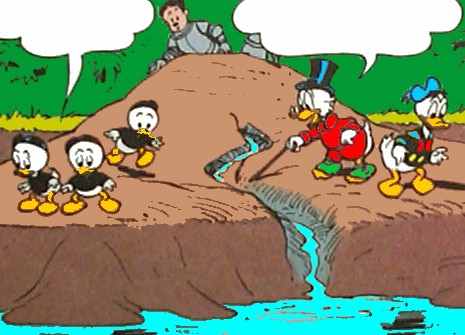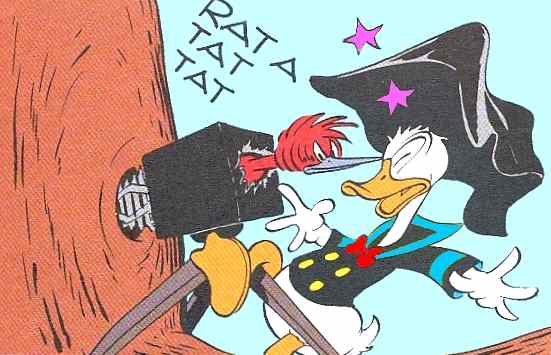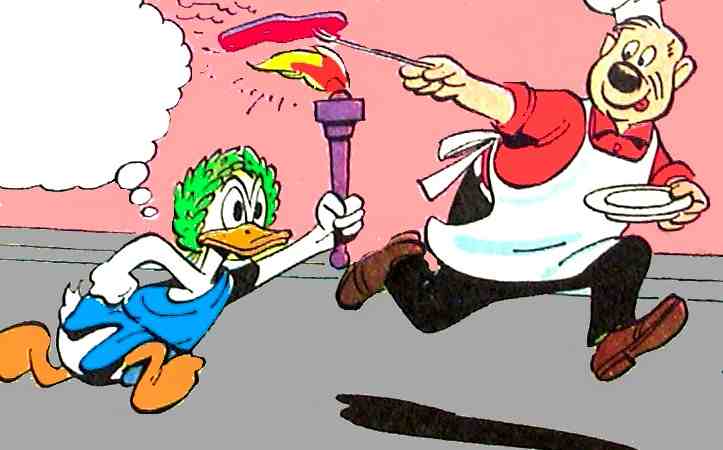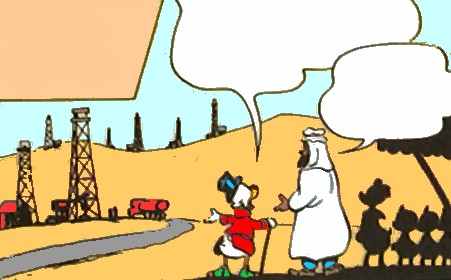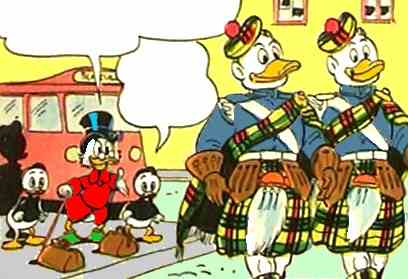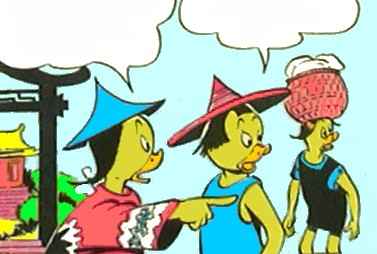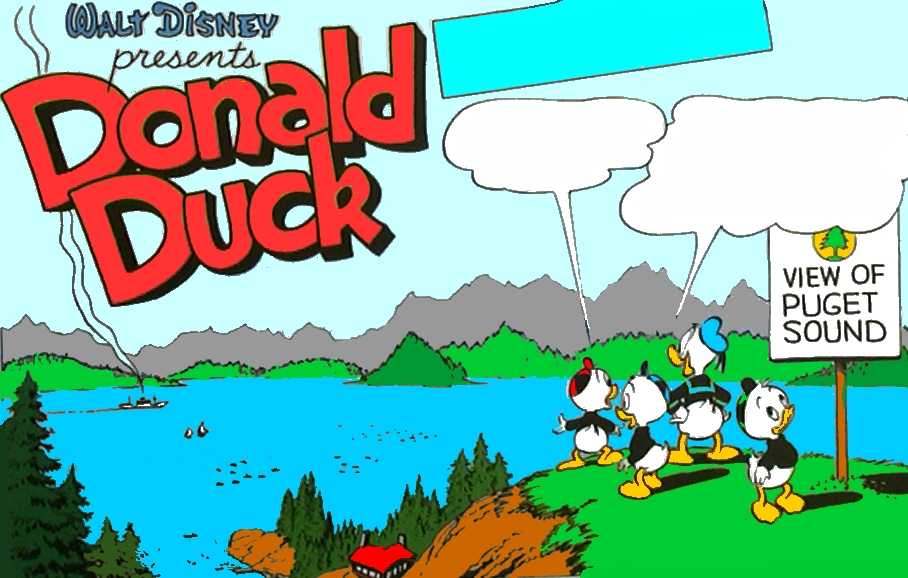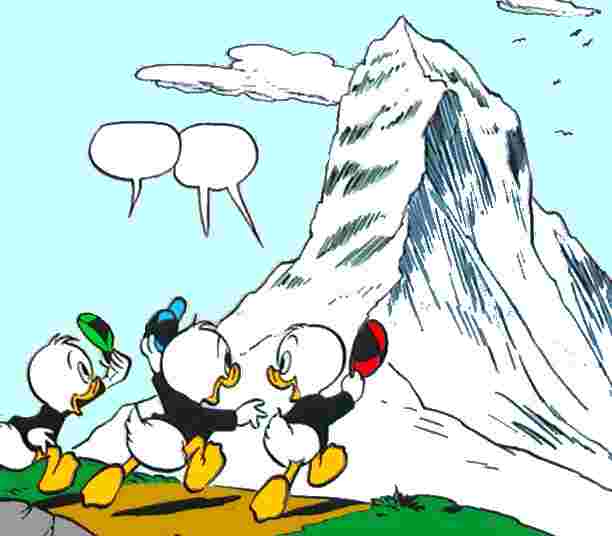| HISTORY | |||||||||
Barks was always fascinated by ethnic history and archaeology. These interests also shine through in a number of his stories. Here are some examples: In FC0029 The Mummy's Ring from 1943 we are presented to Barks' first single-handed adventure story, and he chose an exotic place - The Valley of Kings in Egypt - and proceeded to build a story around the picturesque scenery. This was to be the first story of several in which he would rely heavily on the National Geographic magazines in order to get details as historically correct as possible. In FC0275 Ancient Persia from 1950 Barks described his favourite ancient location areas namely Persia (mainly Iran today) and Mesopotamia (mainly Armenia, Iraq, and Syria today) and it was even done using the topic of modern excavations as the main plotline. In U$44 Crown of the Mayas from 1963 Barks filled the story with precise scenery and artifacts from the National Geographic magazines to such an extend that they almost overshadow the main plotline of Scrooge wanting to become an honoured member of the Archaeologists' Club in Duckburg. Barks was also very interested in mythology. From time to time he looked to the tales of Nordic, Roman and Greek mythology in order to get ideas for his stories. Examples:
In U$10 The Fabulous Philosophers'
Stone he allows the main story - about the medieval
Philosophers' Stone - to go in several mythological directions such as
the story of King Midas and the fabled Labyrinth of Crete, in U$34 Mythtic Mystery he manages to combine the Gods from all
the three mythological worlds mentioned above, and in
U$40 Oddball Odyssey he lets Magica de Spell play the
role of the Greek sorceress Circe. Barks also used mythological themes
in several of his story titles such as U$12 The Golden Fleecing,
U$36 The Midas Touch, and WDCS292 Instant Hercules. |
